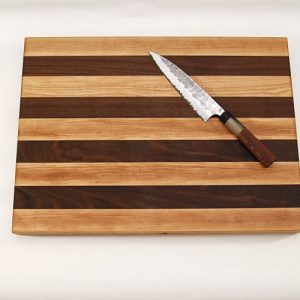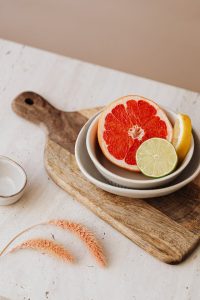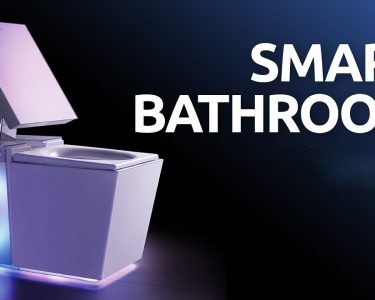Introduction:
In the world of gastronomy, where flavors dance and culinary creations spring to life, there exists an often-overlooked cornerstone of the kitchen the humble cutting board. It’s a canvas upon which every culinary masterpiece is crafted, yet its significance often goes unnoticed. But what if we told you that this unassuming kitchen tool is not merely a surface to chop and Enter Dr. Elizabeth Scott, a seasoned expert in the fields of microbiology and food safety, who has dedicated over two decades to unraveling the intricacies of cutting board cleaning. In this comprehensive exploration, we venture into the realm of science and practicality, delving deep into the secrets that can elevate your culinary skills while ensuring a kitchen that radiates health and hygiene.
Cutting Board Ecosystem
To truly master cutting board cleaning, you first need to understand the ecosystem at play. Dr. Scott explains the microbial world living on your cutting board and its implications for food safety. A typical kitchen cutting board is not just a piece of wood, plastic, or bamboo. It’s a living ecosystem, teeming with microorganisms. Some of these microorganisms are harmless, but others can pose health risks if not properly managed. Bacteria, yeasts, and molds are the primary inhabitants of your cutting board’s microscopic community. These microorganisms come from the food you prepare and the environment. Cross-contamination can occur when the cutting board is not cleaned and sanitized correctly. Harmful microorganisms like E. coli, Salmonella, and Listeria can thrive and find their way into your meals. Dr. Scott emphasizes the importance of understanding this ecosystem as the foundation for effective cutting board cleaning. It’s not about merely removing visible food particles; it’s about controlling the invisible world of microorganisms that can make you sick.
Right Cutting Board
Not all cutting boards are created equal. Discover which materials are best for your specific needs, whether it’s wood, plastic, or bamboo. Dr. Scott provides insights into the pros and cons of each. Choosing the right cutting board is a crucial first step in mastering the art of cutting board cleaning. Each material has its unique characteristics and maintenance requirements.
Wooden Cutting Boards are a popular choice among chefs for their durability and natural aesthetic. They are gentle on knife edges, reducing wear and tear on your blades. However, they require more maintenance, as they can warp and develop grooves where bacteria can hide if not properly cared for.
Plastic Cutting Boards are affordable and easy to clean. They are available in various colors, making it easy to designate specific boards for different types of food. However, plastic boards can become scarred by knives, providing hideouts for bacteria over time.
Bamboo Cutting Boards offer an eco-friendly alternative. They are harder than most hardwoods, providing a durable cutting surface. However, bamboo boards may split over time, creating crevices where bacteria can flourish.

Proper Cutting Techniques
Cutting techniques can impact the cleanliness of your board. Dr. Scott offers guidance on the right way to handle different ingredients to prevent cross-contamination. Proper cutting techniques are not only about slicing, dicing, and chopping efficiently; they are also about maintaining a clean and safe kitchen. Dr. Scott underscores that your cutting techniques can significantly impact the cleanliness of your cutting board and the safety of your food.
- Separate Raw and Cooked Foods: Use separate cutting boards for raw meat, poultry, and seafood, and another one for vegetables and other foods. Cross-contamination is a significant concern, and this simple step can prevent it.
- Hand Hygiene: Wash your hands thoroughly before and after handling food, especially if you touch raw meat. This minimizes the transfer of harmful microorganisms.
- Avoid High-Risk Practices: Dr. Scott advises against risky practices like cutting meat directly on the kitchen counter. Always use a cutting board to contain food residues and juices.
- Use Different Knives: Assign specific knives for different types of food. For example, reserve one knife for cutting raw meat and another for cutting vegetables.
Cleaning Essentials
Cleaning your cutting board is a fundamental aspect of maintaining a safe kitchen. Dr. Scott highlights that even with the most advanced cleaning techniques, the basics remain critical. The cornerstone of cutting board cleaning is using soap and water. It’s a simple yet highly effective way to remove food particles, dirt, and some microorganisms from your cutting board. Here’s how you should do it:
- Rinse: Begin by rinsing the cutting board with warm water to remove loose debris and food particles.
- Apply Soap: Apply a small amount of dish soap directly onto the cutting board.
- Scrub: Use a brush or sponge to scrub the cutting board, paying special attention to any visible stains or residues.
- Rinse Again: Rinse the cutting board thoroughly with warm water to remove all soap residues.
- Dry: Allow the cutting board to air dry completely before storing it. Moist environments encourage the growth of microorganisms.
Advanced Cleaning Techniques
Explore advanced techniques and tools that can ensure your cutting board remains pristine. While soap and water are excellent for daily cleaning, there are times when you need to go the extra mile to ensure your cutting board is free from harmful microorganisms. Dr. Scott introduces advanced cleaning techniques that can give you peace of mind.
- Bleach Solution: For a thorough sanitization, prepare a bleach solution by mixing one tablespoon of bleach with a gallon of water. Rinse the cutting board with this solution, and let it air dry. Ensure that you rinse it with water again before using it.
- Hydrogen Peroxide: Hydrogen peroxide is another effective disinfectant. Apply it to your cutting board, let it sit for a few minutes, and then rinse with water.
- Vinegar: White vinegar is a natural disinfectant. Apply it to your cutting board, allow it to sit for a few minutes, and then rinse with water.
Natural Cleaning Solutions
For those who prefer eco-friendly and natural options, Dr. Scott shares her favorite recipes for DIY cleaning solutions that are safe for your family and the environment. If you’re conscious of using chemicals in your kitchen or prefer natural alternatives, you’ll be pleased to know that you can still maintain a clean cutting board with eco-friendly solutions. Dr. Scott shares some of her favorite recipes for DIY cleaning solutions that are safe for your family and the environment.
- Lemon and Salt: Cut a lemon in half and dip it in salt. Scrub your cutting board with this natural abrasive cleaner. The acidity of the lemon helps sanitize the board.
- Baking Soda: Make a paste with baking soda and water. Apply it to the cutting board and scrub. Baking soda is a gentle abrasive that helps remove stains and odors.
- Essential Oils: Mix a few drops of essential oils like tea tree oil or lavender oil with water. These oils have natural antimicrobial properties. Use this solution to wipe down your cutting board.
- Vinegar and Water: Create a solution of equal parts white vinegar and water. Use it to clean and disinfect your cutting board.
Maintaining Cutting Board
To master the art of cutting board cleaning, you must also understand the importance of maintaining your cutting board. Proper maintenance not only extends the lifespan of your cutting board but also ensures a safer cooking environment.
- Regular Oil Treatment: Wooden cutting boards benefit from regular oil treatments. Mineral oil or food-grade oils like coconut oil can prevent the wood from drying out or cracking. Apply a thin layer of oil and allow it to soak in.
- Avoid Dishwashers: Never put your cutting board in the dishwasher. The high heat and moisture can cause warping and splitting, especially in wooden boards.
- Scrape and Sand: Regularly inspect your cutting board for deep grooves or scratches. Use sandpaper or a scraper to smooth out these imperfections, making it more challenging for bacteria to hide.
- Sunlight: If you have a wooden cutting board, consider placing it in direct sunlight occasionally. Sunlight has natural sterilizing properties.
- Replace When Necessary: If your cutting board has deep grooves, cracks, or is showing signs of wear that can’t be remedied, it’s time to replace it. Don’t compromise on food safety.

KeyPoint:
| Material | Pros | Cons |
|---|---|---|
| Wood | Natural, Durable, Attractive | Requires Frequent Maintenance |
| Plastic | Affordable, Easy to Clean | Susceptible to Knife Scarring |
| Bamboo | Eco-Friendly, Hard Surface | May Split Over Time |
Conclusion:
In the realm of culinary arts, where the harmony of flavors and textures takes center stage, there exists an often-underestimated foundation upon which gastronomic masterpieces are built – the cutting board. Dr. Elizabeth Scott, with her extensive experience in microbiology and food safety, has unraveled the secrets of cutting board cleaning, transforming it from a mundane chore into an art form that can elevate your culinary skills and maintain a healthy kitchen. As we conclude this journey of discovery, let’s recap the key takeaways and insights you’ve gained the very heart of cutting board mastery lies an understanding of the microbial world residing on your board. This ecosystem can either be a sanctuary of safety or a breeding ground for harm, depending on how you manage it. The material of your cutting board matters. Whether it’s wood, plastic, or bamboo, each has its own set of advantages and maintenance requirements. Your choice should align with your cooking habits and preferences.




